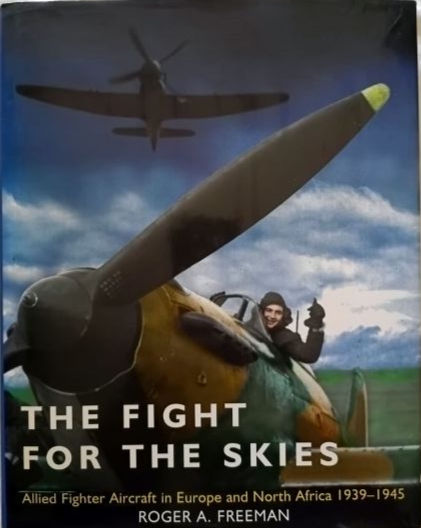Flying For Freedom: Life and Death In Bomber Command (2005) By Tony Redding
"Flying for Freedom" is a personal view of life and death in Bomber Command at the height of the bombing offensive against Germany and targets in Occupied Europe.
A large-format hardback, Flying for Freedom is an intimate, sensitive account of the human cost of Bomber Command's war.
The story, told by Lancaster rear-gunner W/O Sidney Knott DFC, is set in the context of a detailed assessment of the bomber war by author Tony Redding.
This unique combination of dramatic narrative and strategic overview is supported by 115 photos and graphics, many published for the first time.
Sidney Knott survived 64 operations. His first tour opened in January 1943, following a posting to newly formed 467 Squadron, Royal Australian Air Force. His 29 operations with 467 Squadron included many "Battle of the Ruhr" targets. His aircraft, captained by 20-year-old Frank Heavery, attacked Duisburg five times and Essen on three occasions. The crew also participated in three raids on Berlin. Knott recalls his crew's dilemma when confronted with a difficult choice, having survived sorties against 12 heavily defended targets. They were offered the choice of transferring to a new unit for "special duties" or to continue the tour with 467 Squadron. The matter was put to a crew vote. Knott regarded his chances of surviving a full tour at such intensity as virtually zero. He voted for special duties. The crew were split. Two others also wanted to move, but three were in favour of staying. Heavily held the casting vote, and he decided they would stay put. As a result, another crew was posted for special duties. The members of this crew were the first to die during 617 Squadron's attack on the Ruhr dams in May 1943. Of the 258 crews posted to 467 Squadron RAAF, 115 crews failed to return. Many crews during Sidney Knott's first tour failed to survive 10 operations. Five of 467 Squadron's Commanding Officers were killed in action. As a screened gunner, Sidney Knott trained fledgling gunners during his rest from operations. When sharing his operational experiences with the "sprogs", he was careful not to mention that posting to an operational bomber squadron would mean a death sentence for one in three. By April 1944, Knott had found a new crew. He began a second tour as a Pathfinder with 582 Squadron, also flying Lancasters. While his 35 Pathfinder operations included area attacks against German cities, the focus was the aerial assault on V1 and V2 sites and French rail targets in the weeks leading up to D-Day and the Normandy landings. As the crew's Pathfinder skills developed, they were given increasing responsibility. Eventually, they flew as Bombing Leader for a series of radar-assisted precision attacks on pinpoint targets. When Lancaster D-Dog's engines fell silent at the RAF Little Staughton dispersal at 02.30 on Saturday, August 19, 1944, Sidney Knott's war in the air was at an end. He recalls: "I sat behind the guns for a few seconds, paralysed by the thought that I had a future, after all.
Flying for Freedom is an unusual book, with some strong, controversial views about post-war perspectives on the morality of the area bombing offensive and its contribution to Victory in Europe in May 1945. Knott's narrative demonstrates how some crews attempted to improve their chances of survival through self-discipline. This book's intimacy centres on a moving account of squadron life and how every individual lived with unspoken fears.
- Hard Cover with Dust Jacket
- 308 pages
- In Fair to Good Condition































